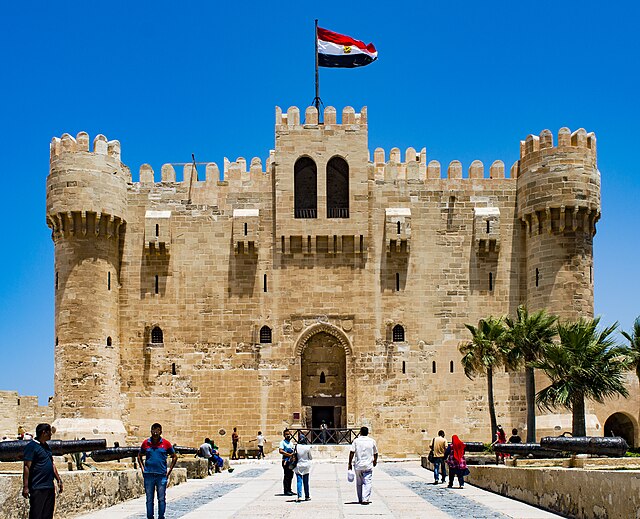The Citadel of Qaitbay is a 15th-century defensive fortress located on the Mediterranean sea coast, in Alexandria, Egypt. It was built from 1477 to 1479 AD by Sultan Al-Ashraf Sayf al-Din Qa'it Bay. The Citadel is situated on the eastern side of the northern tip of Pharos Island at the mouth of the Eastern Harbour.
Closeup of the Citadel of Qaitbay
Ceiling in Qaitbay Citadel, Alexandria
Side view of Qaitbay Citadel
Hallway in Citadel of Qaitbay
Sultan Abu Al-Nasr Sayf ad-Din Al-Ashraf Qaitbay was the eighteenth Burji Mamluk Sultan of Egypt from 872 to 901 A.H.. He was Circassian by birth, and was purchased by the ninth sultan Barsbay before being freed by the eleventh Sultan Jaqmaq. During his reign, he stabilized the Mamluk state and economy, consolidated the northern boundaries of the Sultanate with the Ottoman Empire, engaged in trade with other contemporaneous polities, and emerged as a great patron of art and architecture. In fact, although Qaitbay fought sixteen military campaigns, he is best remembered for the spectacular building projects that he sponsored, leaving his mark as an architectural patron on Mecca, Medina, Jerusalem, Damascus, Aleppo, Alexandria, and every quarter of Cairo.
Mamluk Sultan Qaytbay ("Mag Caitbeivs Cairi Svltan") by Florentine painter Cristofano dell'Altissimo (16th century), Galleria degli Uffizi
Anonymous Venetian painting depicting the reception of Venetian ambassadors in Damascus. The wall in the background is decorated with Qaitbay's blazon.
Qait bey plate at Masjid al-Nabawi at Medina.
Citadel of Qaitbay in Alexandria.








